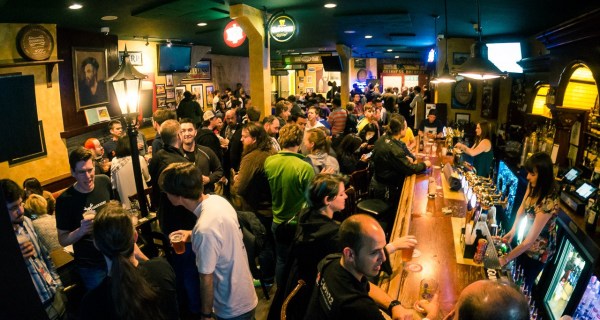We want to hang out with you at Maker Faire Bay Area! Put our after-hours meetup on your schedule with a Sharpie, because the 6th Annual Hackaday x Tindie MFBA Meetup w/ Kickstarter will be bigger and better than ever with a new venue that has plenty of room for everyone!
The hacker crowd descends upon San Mateo weekend after next to show off a year of creations at Maker Faire. On Saturday, May 18th, the Faire will close for the evening as our meetup heats up. Bring along some hardware to show off and get the conversation started. Whether you’re attending the Faire or staffing a booth all day, this is the perfect way to unwind.
New Place with More Space!
Every year we’ve been packed to the gills and it’s time to make room for more people. This year Hackaday and Tindie have teamed up with Kickstarter to rent out the entire B Street Station in San Mateo. It’s close by and has plenty of room to hang out with friends new and old. We’ll provide light food and the first drink is on us! Please RSVP so we know how many people to expect, and like we said, grab a project to bring along! This event is open to all who are 21 years of age or older.
Begin Your Weekend with HDDG on Thursday
Start the weekend off right with the HDDG meetup on Thursday night. In keeping with tradition, this special Maker Faire edition of the Hardware Developer’s Didactic Galactic is happen at the San Francisco Supplyframe office on May 16th. You’ll find a ton of people from out of town on hand to enjoy talks ranging from non-rectangular phone design and mitigating ESD in wearables, to getting your projects funded with PR stunts. Speakers include Christina Cyr, Mary West, and Mic Black.
Newsletter from the Editors
Stay caught up on the finest Hackaday articles and get info about event announcements like this one. Every week the Hackaday Editors put together a newsletter delivered directly to your inbox.











![Jef Raskin A Collection of [Jef Raskin]'s work](https://i0.wp.com/hackaday.com/wp-content/uploads/2015/05/jef-raskin.jpg?w=796&h=353&ssl=1)






















